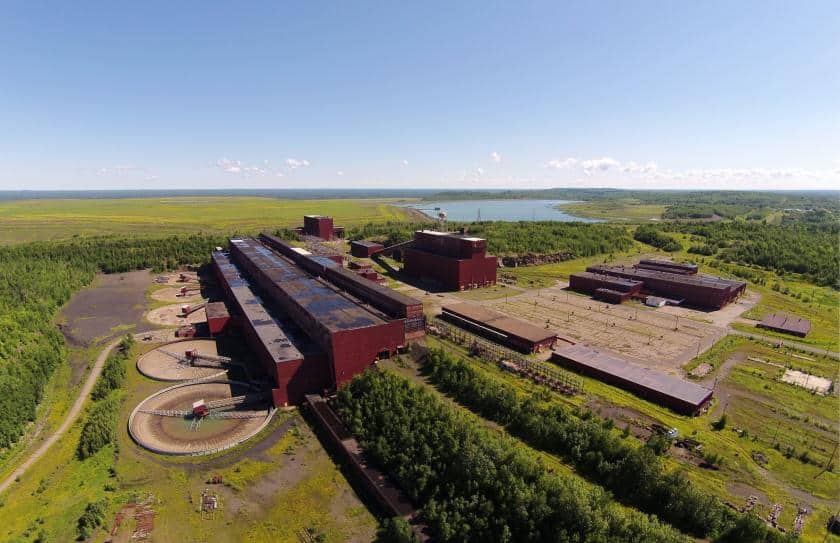
The specific conditions under which Minnesota’s first copper-nickel mine could operate are included in a document released last week by the Minnesota Department of Natural Resources.
PolyMet’s draft permit to mine is now open for public comment until March 6, with two hearings scheduled in early February.
The release does not allow the mine to start operating, but it does indicate the DNR generally accepts the company’s proposal. PolyMet needs numerous permits from local, state, and federal authorities, but the permit to mine is critical.
Making progress
The permit to mine is intended to prevent possible environmental harm from mining, dictating mine construction and development, operational practices, and reclamation.
“We believe our mine design meets all necessary requirements to construct and operate the mine in compliance with state law under the published draft permit conditions,” said Jon Cherry, PolyMet’s president and CEO. “Public comment on these conditions is the last step before DNR makes its final decision.”
The company’s NorthMet Project proposal is located near the cities of Hoyt Lakes and Babbitt in northeastern Minnesota, and environmental impacts would include the creation of mine pits, stockpiles and waste rock piles, refurbishing part of the former LTV Steel plant, constructing tailings basins for processing waste, and expanding other infrastructure.
The permit also includes a draft plan to replace the more than 1,000 acres of wetlands the project will destroy.
“The draft permit to mine details the comprehensive terms and conditions, including financial assurance, developed to ensure that the project is designed, constructed, operated, reclaimed, and closed in a way that meets state standards,” the DNR stated.
The DNR’s special conditions include requirements for reclamation, financial assurance, groundwater and surface water monitoring, design of the tailings basin dams, and more. The full list of conditions is available here (PDF).
Water worries
The mine would be located near the Partridge and Embarrass Rivers, which flow toward Lake Superior. Its headwaters location and the potential for water pollution associated with copper mining has caused Native American tribes and environmentalists to object to the project.
Fond du Lac Band of Lake Superior Chippewa’s reservation at Fond du Lac is downstream of the mine, and wild rice waters and other important resources are at risk.
T’he proposed mine described in the permit is based on the Final Environmental Impact Statement, which was deemed “adequate” by regulators two years ago, but there are several new and changed elements.
The Fond du Lac Band’s water specialist said the location of replacement wetlands to offset the mine’s impact are different, for example.
“The takeaway message for Fond du Lac is that there are still an awful lot of unanswered questions,” Schuldt told Minnesota Public Radio News.
Environmental groups said they expect the permit to support PolyMet’s previous promises to mine responsibly and without polluting the environment.
Causes for concern
The company has previously promised to meet Minnesota water quality standard for sulfate discharges into wild rice waters, to fully protect taxpayers, and otherwise safeguard the state.
But, multiple organizations immediately raised concerns about how the proposal seeks to prevent pollution, and the long-term threat of contamination of the St. Louis River watershed. They say it not only threatens the state’s clean water, but future taxpayers who could be forced to pay for clean-up if the company does not.
“The plan also relies on outdated technology and a flawed tailings basin,” said Steve Morse, director of the Minnesota Environmental Partnership. “The long-term risks to the safety and health of downstream communities and Lake Superior far outweigh the short-term benefits.”
The same day the permit was released, the Mining Truth coalition released new polling data that shows widespread opposition to the mine proposal in Minnesota. According to the group, a Public Policy Polling survey in December found that 44 percent of respondents oppose the proposal, while 40 percent support it.
At the same time the permit to mine is being considered, the Minnesota Pollution Control Agency is also seeking comments on a draft air permit, a draft water quality permit, and a draft 401 water quality certification. The drafts will be available soon on Minnesota’s online portal for the project.
Provide input:
View the permit application and draft conditions.
Submit comments using the state’s online form.
Submit comments by mail:
MN Department of Natural Resources
Division of Lands and Minerals
500 Lafayette Road, Box 45
St. Paul, MN 55155-4045
Attend a public meeting:
- Wednesday, Feb. 7, 2018
Mesabi East (Aurora-Hoyt) High School
601 N 1st St W, Aurora, MN 55705
4 – 9 p.m. Open house
6 – 9 p.m. Public comment forum - Thursday, Feb. 8, 2018
DECC – Duluth Entertainment Convention Center
350 Harbor Drive, Duluth, MN 55802
1 – 9 p.m. Open house
6 – 9 p.m. Public comment forum

